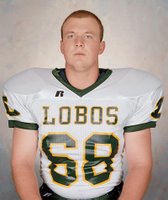David Rejeski, director of the Project on Emerging Nanotechnologies, told the U.S. Food and Drug Administration (FDA) during a hearing today that "there are currently 130 nano-based drugs and delivery systems and 125 devices of biomedical devices in preclinical, clinical or commercial development — an increase of almost 70 percent just since last year. While FDA already has approved some products with materials in the nanosize range, prospects for future growth in this area—and the burden it will place on the agency’s resources — are striking."
Take a look at Rejeski's comments and presentation here. The title of the presentation: "FDA and Nanotechnology: Public Perceptions Matter."
I could not agree more. This simple fact was one of the reasons behind this blog's launch back in 2003. But, in my contrarian tradition, let me add one further warning: Public perceptions can be more easily manipulated when it comes to a science and technology filled with as many unknowns as nano.
Like my old ink-stained journalism prof. drummed into my head back in the mid-'80s, take a look at the interest your source has in certain outcomes (or perceptions), and of course seek out more than one avenue for information.
I spoke just yesterday to a leading nanotech scientist and entrepreneur for a freelance story I'm working on. I asked him about the FDA preparedness issue. The answer I received surprised me. Not only is the FDA well informed about the specific nanotech-based drugs that are about to cross its desk, but the National Nanotechnology Initiative is getting ready to launch a pretty convincing campaign to show the public exactly what is known about these new-generation drugs.
I won't give away the store yet, but stay tuned for more on that.
Backgrounder
Ex-FDA official concludes FDA needs more dough
Nanotech hocus group
Taking toxicity out of quantum dots
Nanotech's 'difficult foe'
Perceptive nano
Perception is de facto nano fact
FDA should put in more face time
 I have known MEMS and nanotechnology analyst Marlene Bourne ever since my stint a few years ago at Small Times magazine, where she was a columnist and I was news editor. I have always admired the way she injects a voice of reason into any topic she writes about, whether it's MEMS accelerometers for automotive air bags or the latest trend in nanotech-related investing: "cleantech."
I have known MEMS and nanotechnology analyst Marlene Bourne ever since my stint a few years ago at Small Times magazine, where she was a columnist and I was news editor. I have always admired the way she injects a voice of reason into any topic she writes about, whether it's MEMS accelerometers for automotive air bags or the latest trend in nanotech-related investing: "cleantech."



